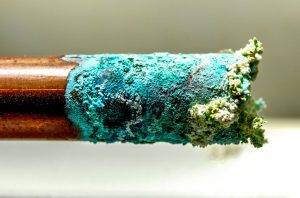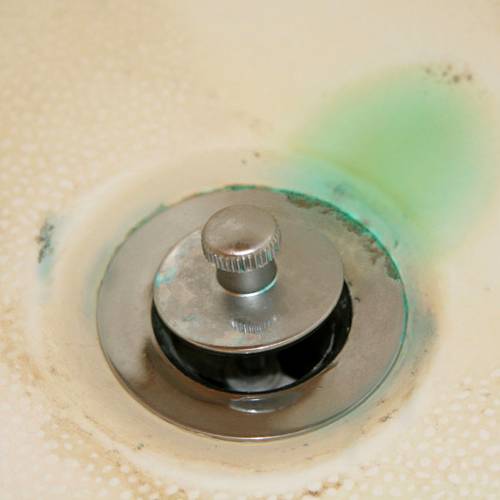Have you noticed that the white porcelain around your faucets is turning a bluish-green color?
Staining of this type is the result of the corrosion of copper pipes or fixtures. The primary culprit is the pH balance of your water. The lower the pH, the more acidic the solution in the water. Corrosion of copper pipes can create several issues for homeowners. You can test the pH of your water to ensure that your water has the right pH balance to reduce the risk of copper corrosion. Usually, raising the pH levels of your water will help to eliminate corrosion and staining and will ensure that your water is safe and healthy to drink.
How Water pH Affects Copper Pipes
Having an incorrect pH balance in your water can lead to issues such as discoloration, blue-green staining, and an unpleasant taste. Hair color can also be adversely affected by copper staining. Having an irregular pH for too long can result in the corrosion of your home’s copper pipes and fixtures. Aluminum fixtures will begin to show signs of copper staining and corrosion. An irregular pH balance can cause such severe corrosion that pipes become subject to pinhole leaks, which could lead to flooding and costly repairs over time. If you are experiencing this issue, we can come up with a solution to remove this problem from your water.
Without diving into a refresher course in high school chemistry, understanding how copper and water pH can negatively interact is simple. Copper pipes will leach into tap water when copper interacts with water with a pH of less than 7.0 ppm. This means that any water with a pH level lower than 7.0 ppm is acidic and therefore acts as a corrosive agent on copper plumbing materials. If you add electricity to the copper and water mix, you get even more corrosion.
What Is a Healthy Amount of Copper in Drinking Water?
Although small amounts of copper are not usually harmful to humans, having an excessive amount in your drinking water can have negative health implications including nausea, abdominal cramps, and vomiting. In extreme cases, it has been associated with liver and kidney diseases. Children are especially vulnerable as their bodies are still developing. Copper can be harmful to animals as well, especially fish for whom it is particularly toxic. Sensitive members of the population could also be adversely affected by an imbalance in the pH and by the presence of copper in drinking water.
How Copper in Tap Water Challenges Your Health
Many foods contain copper, and it is a component of many vitamins. Nevertheless, having an excessive amount of copper in your drinking water can have negative health implications. For instance, signs of constant over-exposure to copper include nausea, abdominal cramps, vomiting and diarrhea.
Since heat acts as an activator for many chemicals and compounds, your hot water pipes will be negatively affected the most. If you are already aware of copper corrosion because of blue-green stains around the taps, then you should avoid using this hot copper-leached water for cooking or drinking.
Solutions for Tap Water with Copper Contaminants
Avoiding the over-consumption of copper and other metal contaminants from your tap water is possible. You do not need to worry about how it will affect your health or water fixtures over the next decades. With a free water test from us, you can get the help you need to figure out your next move. If a problem is identified, our technicians can guide you through the process of finding a reasonable solution.
Free Water Test
Are you ready to put an end to the excessive amount of copper content in your family’s drinking water? Contact us today to schedule your free water analysis or 90-day trial.




